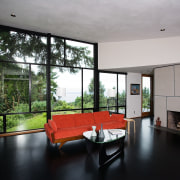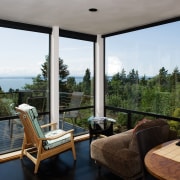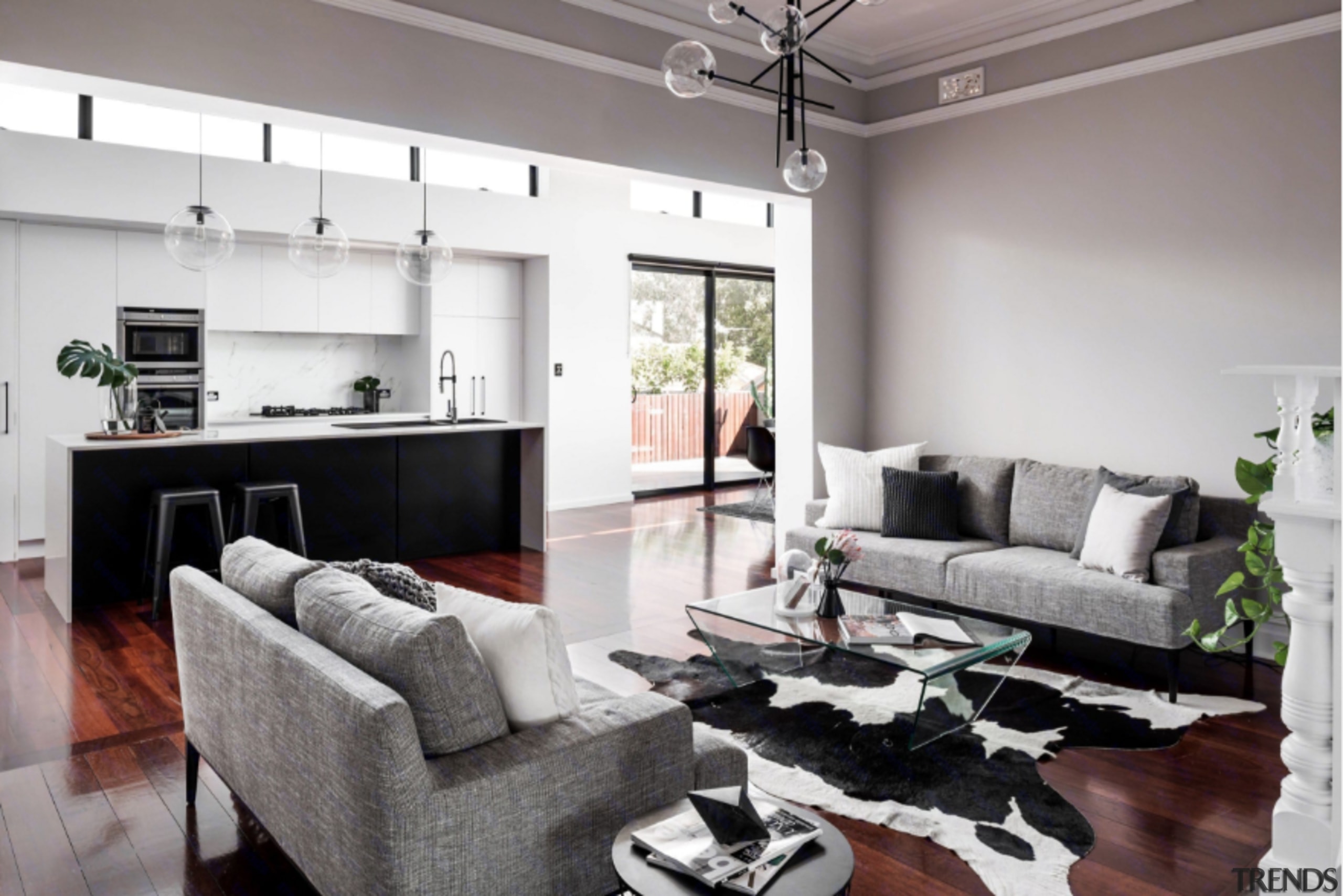Geometry in action
Undeniably modern, this home is clad partly with copper and features a multitude of visually interesting geometric shapes
Architecture and geometry have always been close companions. In ancient times precise ratios provided a variety of structures with symmetry and proportion. Although architecture has moved away from pyramids and the Parthenon, geometric shapes still play a vital role in providing homes with symmetry, scale and visual interest.
At first glance, the most obvious feature of this modern home is its contrasting exterior, clad with cedar siding and green copper panels.
Upon closer inspection, however, it is also the structure's multitude of rectangular forms that add complexity and personality to the design.
The idea of using geometric patterns as a unifying element was something architect David Coleman, from David Coleman Architecture, was interested in developing. It tied in with his clients' love of modern art and their request for an adventurous design.
"The clients liked bold, modern architecture that was curvaceous and interesting," says Coleman.
"They wanted to maximize views of the nearby greenbelt, as well as the views of the water and the mountain range beyond. In the opposite direction there were also limited views of another mountain range available."
The project entailed the partial tear-down and reconstruction of a 1950s rambler-style home. The design program included the addition of a penthouse suite, optimizing views of the nearby sound and creating a dynamic setting for family life, modern art and furniture.
advertisement
In its original form the home consisted of one floor over a partially above-ground basement. The existing foundation, first floor deck and three fireplaces were salvaged to retain the memory of the original building, reduce construction costs and limit waste. All new construction was located within the original building footprint.
"We had the idea to scale the street-side facade low, in homage to the proportions of 1950s architecture. This kept the mass similar to other buildings on the street," says Coleman.
"The feature that tells you that something is different is a glimpse of the long curved penthouse wall, which was, at the owner's request, clad with copper."
As you move around the home the facade takes on a different appearance, with the windows replicating the shapes of the building's forms.
"The exterior material palette was minimized. Cedar and copper were chosen for the siding, while the window frames are black anodized aluminum. Although it's modern with sharp geometry, the cedar provides a feeling of warmth," says Coleman.
The home's entrance is defined with a double-volume atrium that features a glass curtain wall extending the full height and width of the room. Climbing the stairs, which are partially concealed by a feature wall of Douglas fir and Lexan, grants access to the master suite and study. A guest room, playroom and media room are located downstairs.
"The concept behind the glass wall was to create a strong, bold central element. At night, illuminated from the back, it gives the atrium a soft glow."
Located on the main level is a large, partially open-plan living, dining and kitchen area arranged around the pre-existing hearth, as well as two bedrooms and a laundry.
"Interior spaces reflect the dynamic juxtaposition of the primary building forms. Overall the plan is open, but there are features such as the fireplace and the fragments of wall that give visual separation and create intimacy. These elements define functional spaces within the open plan," says Coleman.
"The curved penthouse wall acts as a linking device, adding drama to the main and upper levels. The hearth dominates the center of the open plan and helps delineate the various room functions on all three levels. With the addition of the new upper level penthouse, the living area was doubled without altering the building's footprint."
The fireplace separating the living room from the kitchen and dining area is a combination of two of the home's existing masonry fireplaces. Retaining the old fireplaces was cost-efficient, as the chimney could be easily extended to cater for the extra story.
The fireplace is clad with white fiber-cement board, a material with a matte finish, and fixed on a steel frame. Reveals on each of the panel joints allow the black steel underneath to show through.
In front of the fireplace, a simple hearth consists of quartzite tiles, the same material used on the atrium floor. Despite appearing monolithic from a distance, the quartz provides a sparkle when lit.
"The material selection throughout was minimized to afford simplicity and uniformity of intent. The palette includes concrete, fir, black aluminum, ebonized oak and unpainted plaster."
Credit list
Interior designer
Builder
Siding
Floors
Paints
Heating
Cabinets
Sink
Refrigerator
Kitchen designer
Structural engineer
Roof
Wall coverings
Lights
Blinds
Countertops and backsplash
Faucets
Dishwasher
Story by: Trendsideas
Home kitchen bathroom commercial design
Big style, small space – 7 powder room design ideas
Catching a wave
Now and Zen
advertisement
advertisement
advertisement
advertisement
advertisement
advertisement
advertisement














